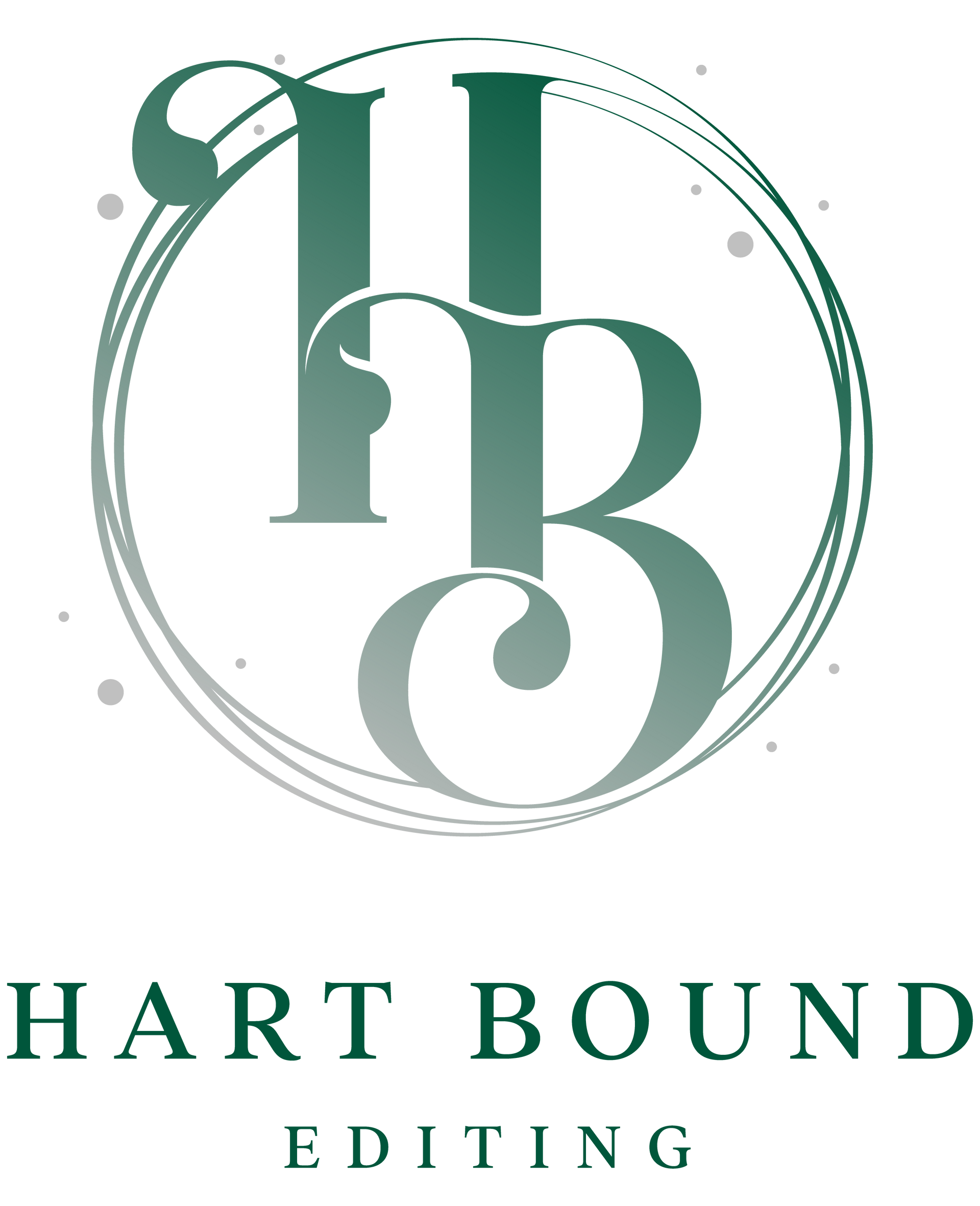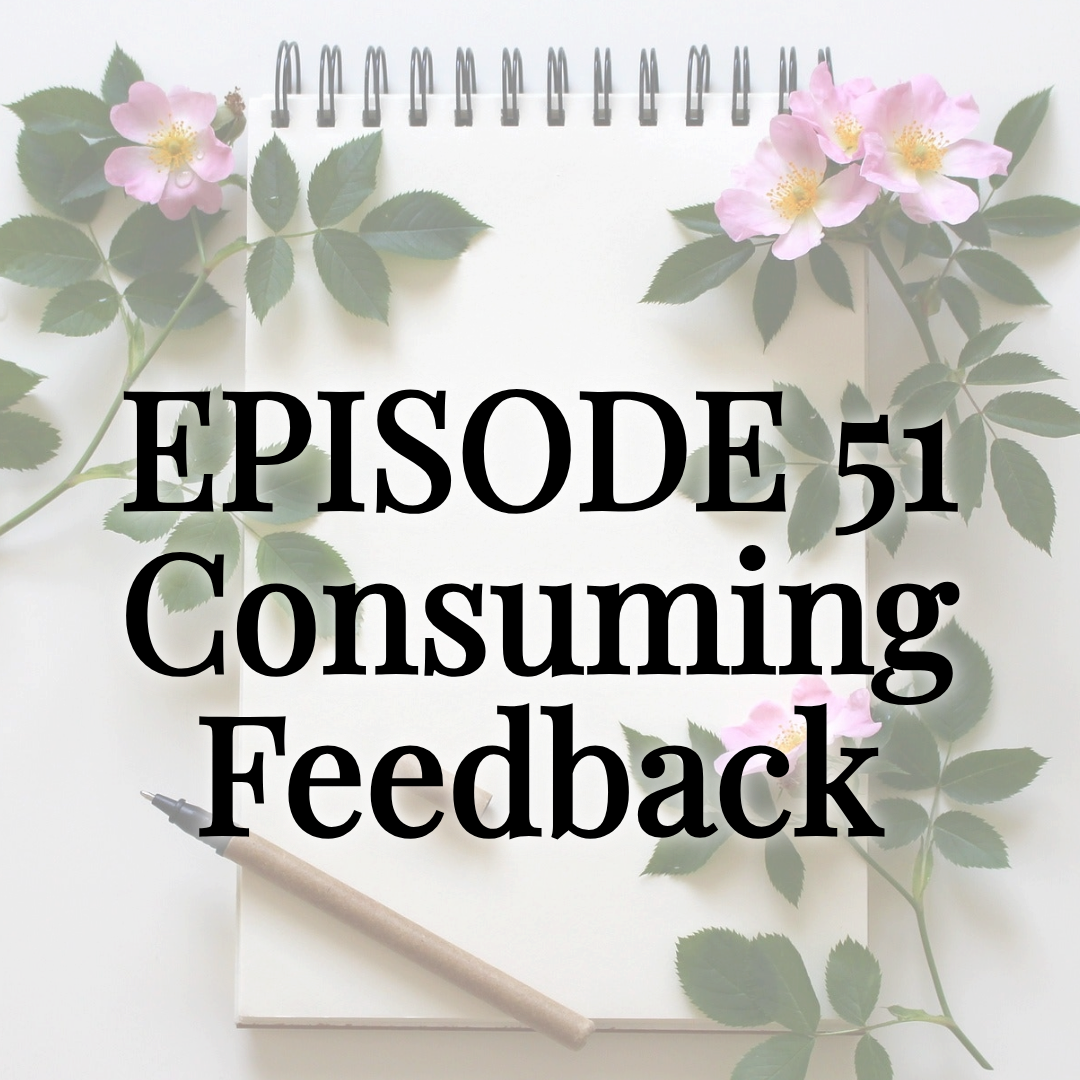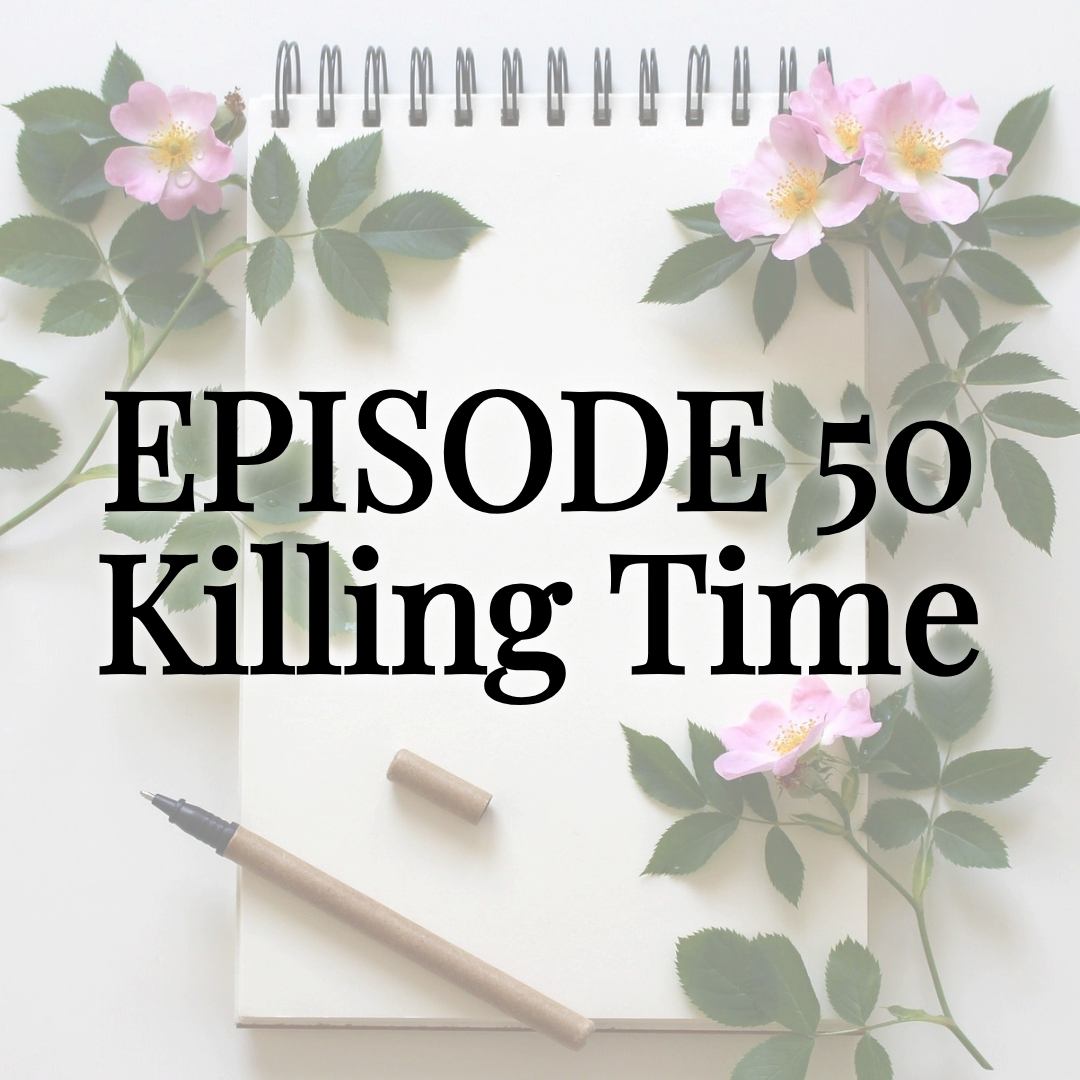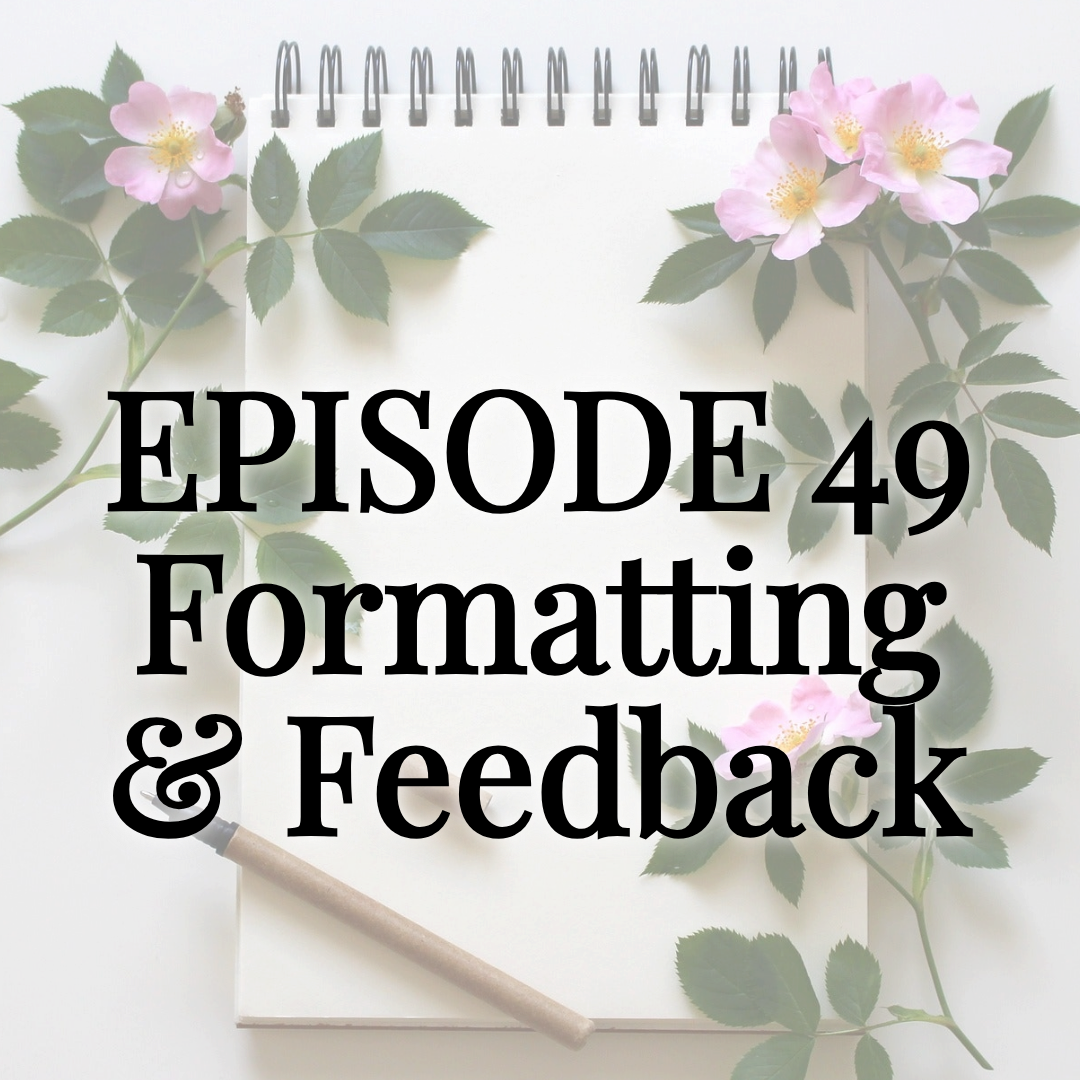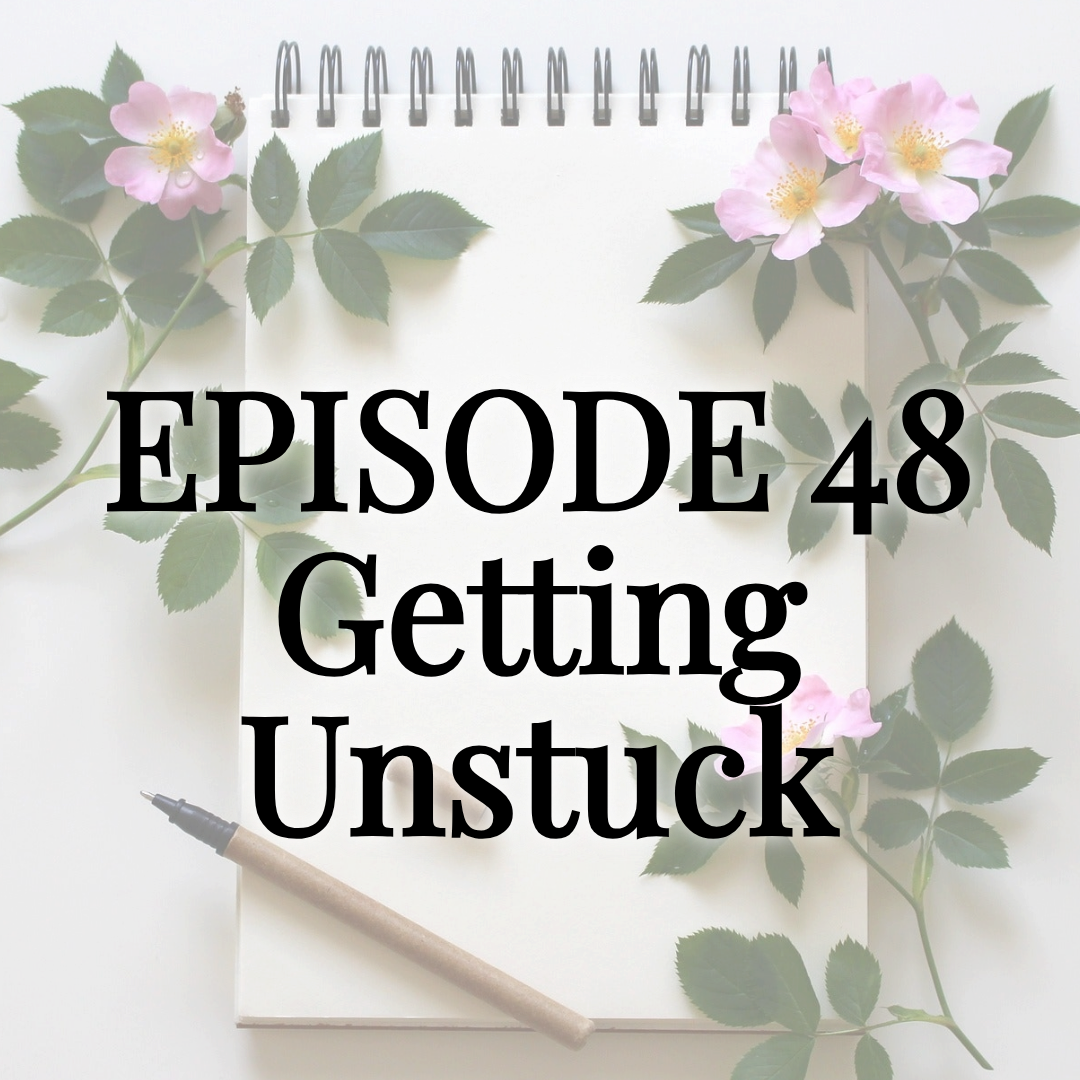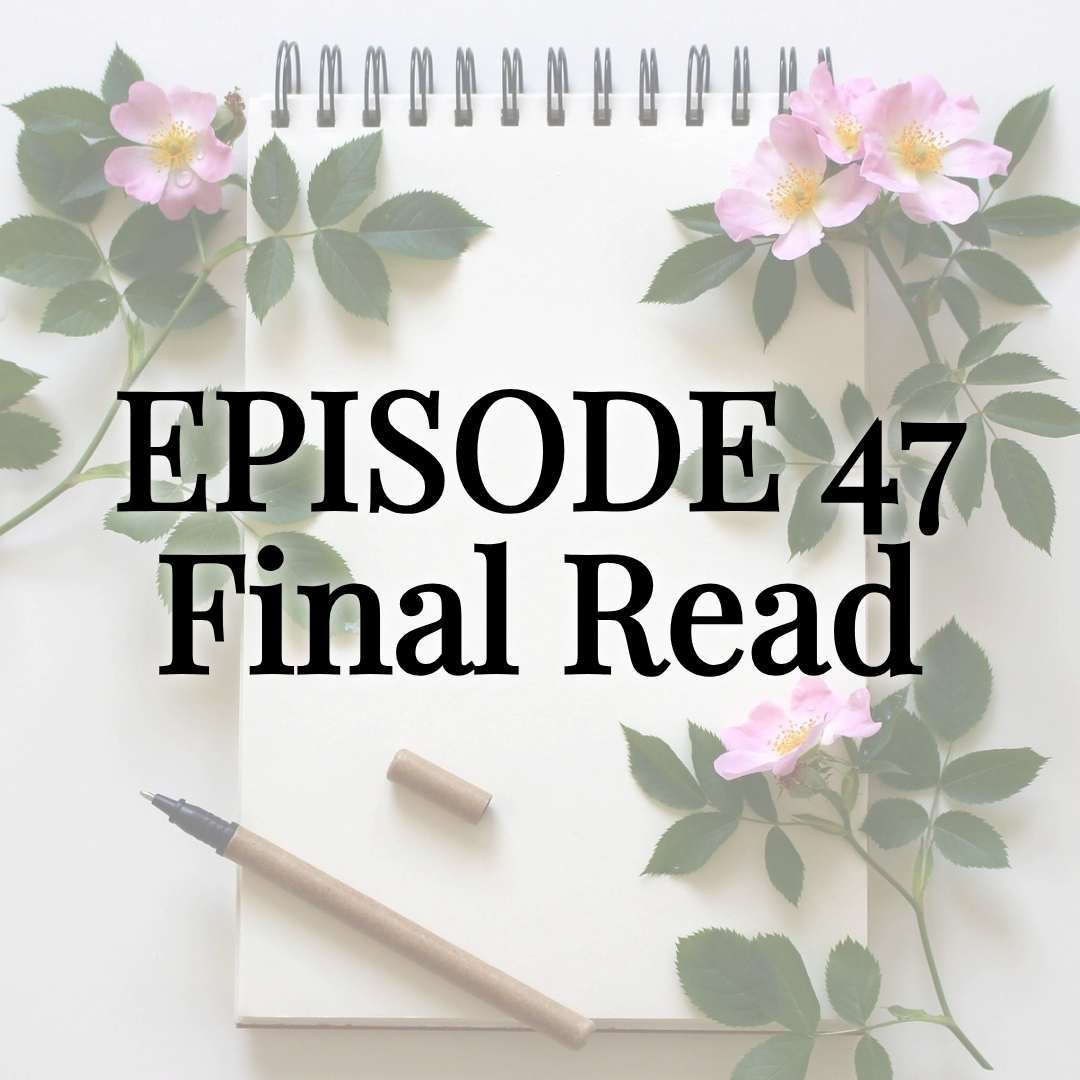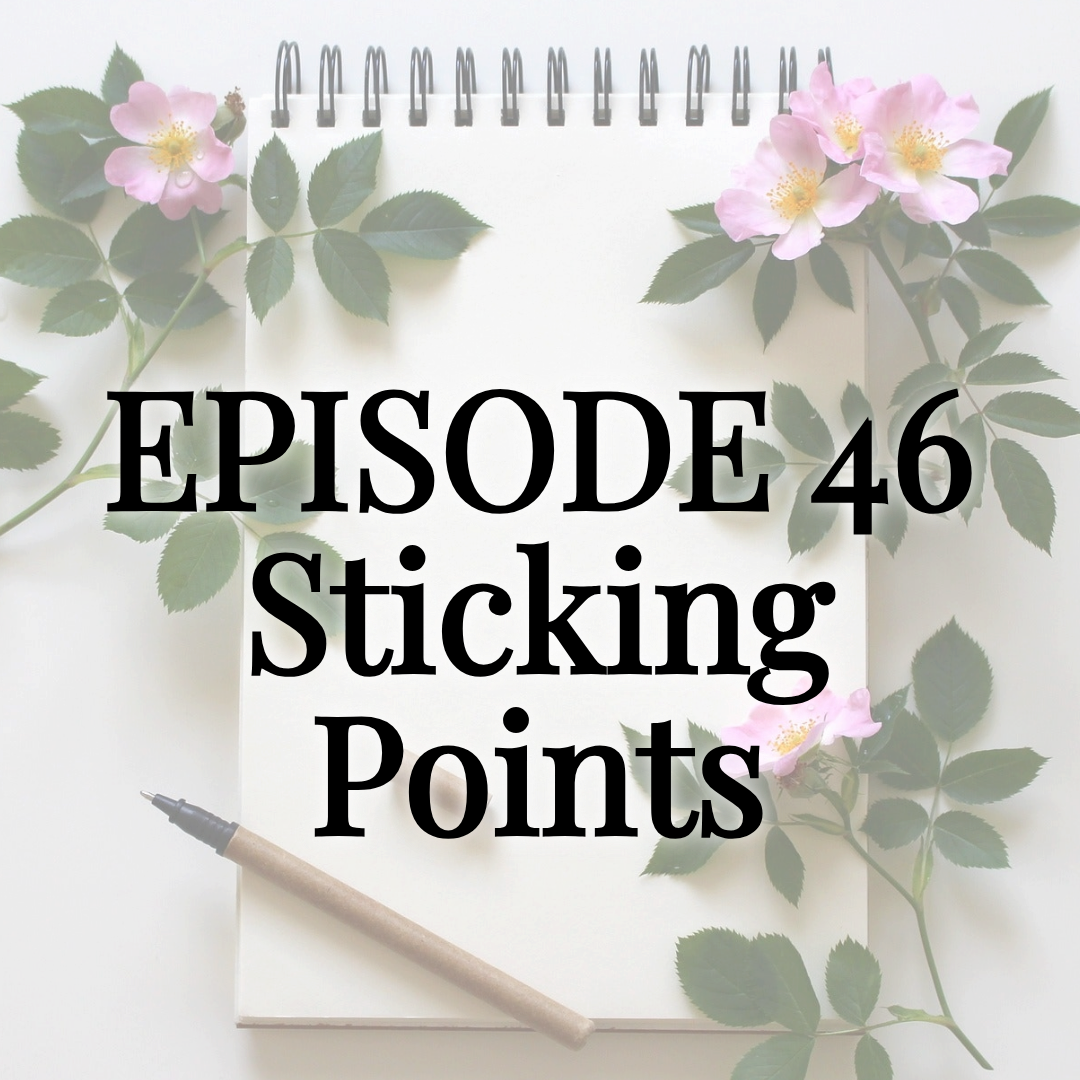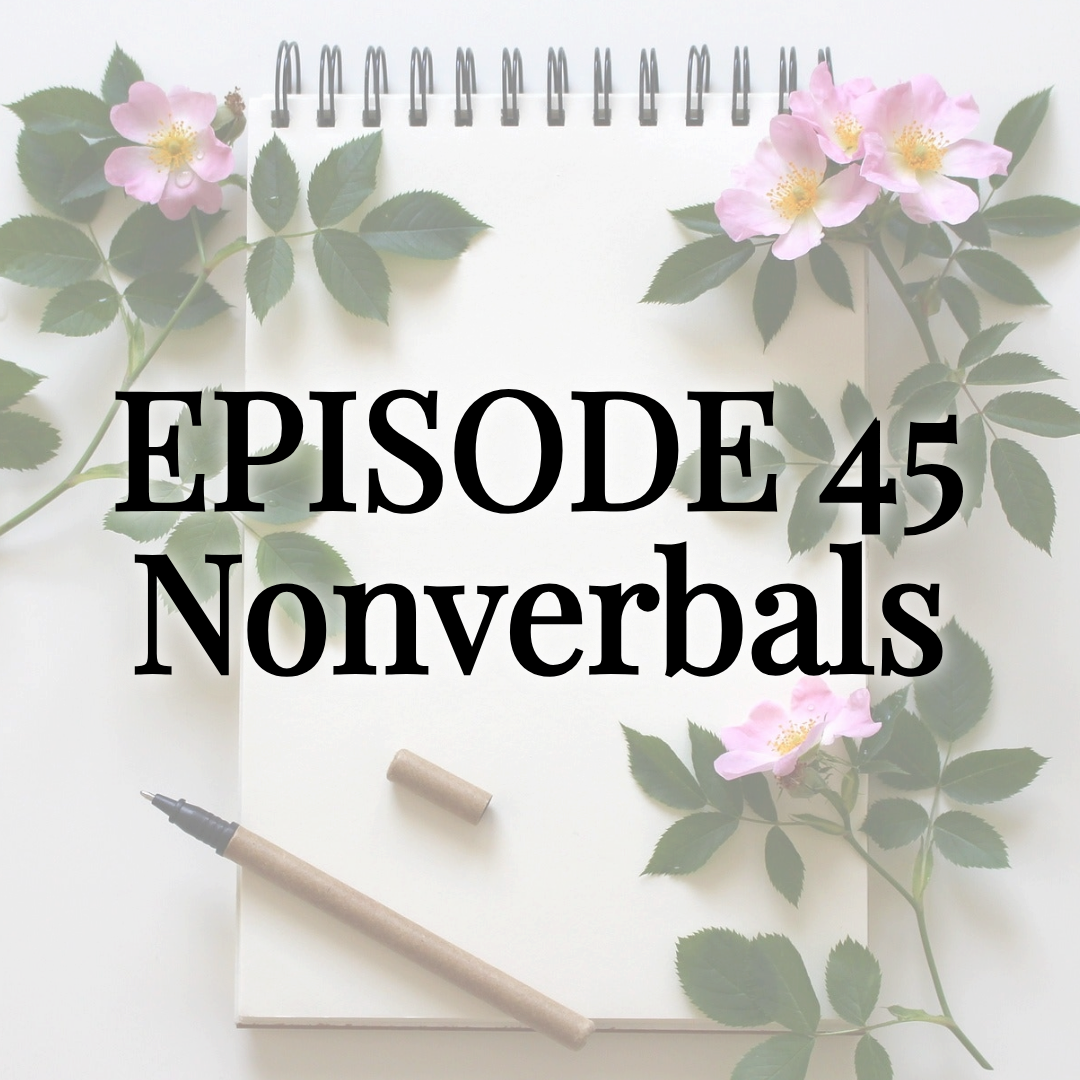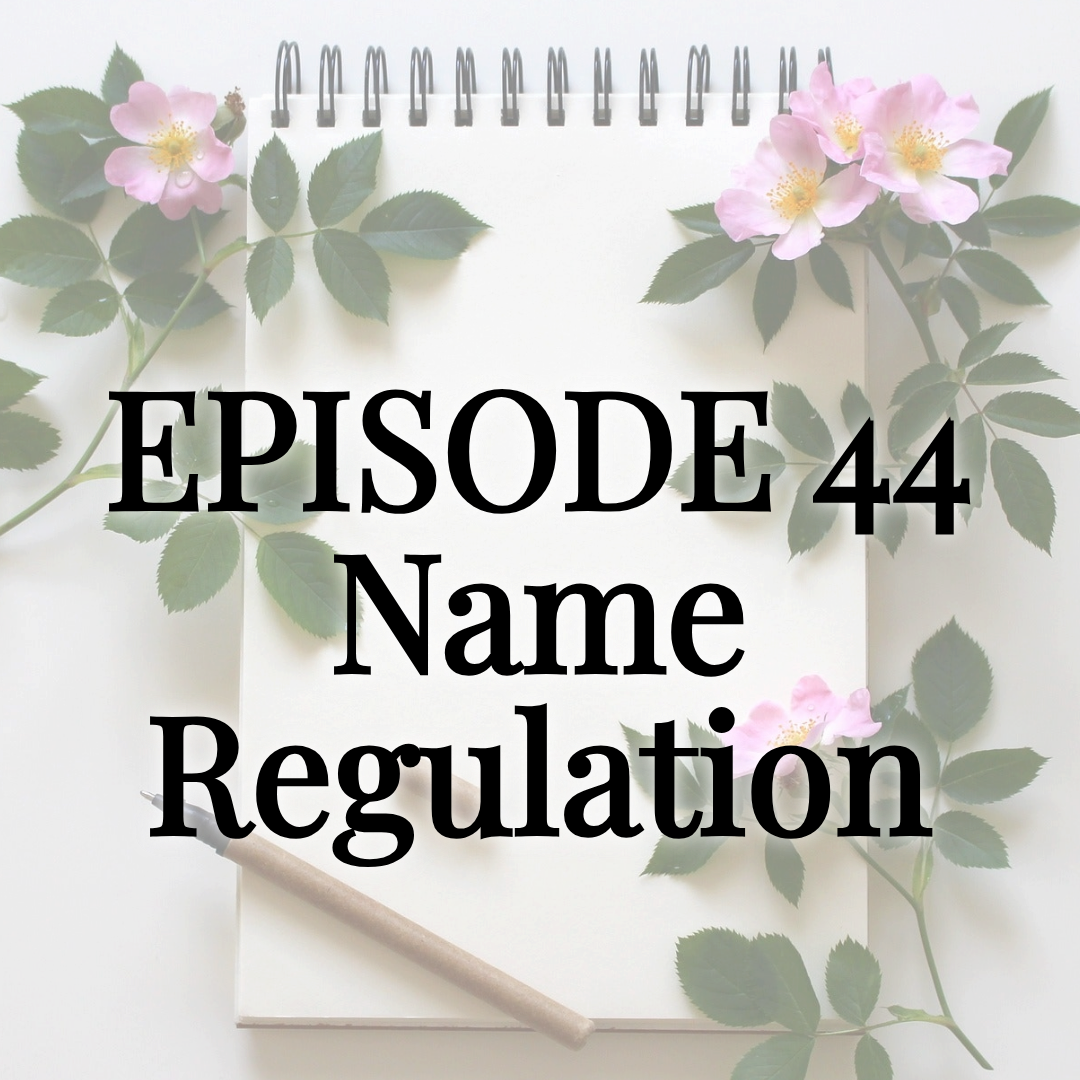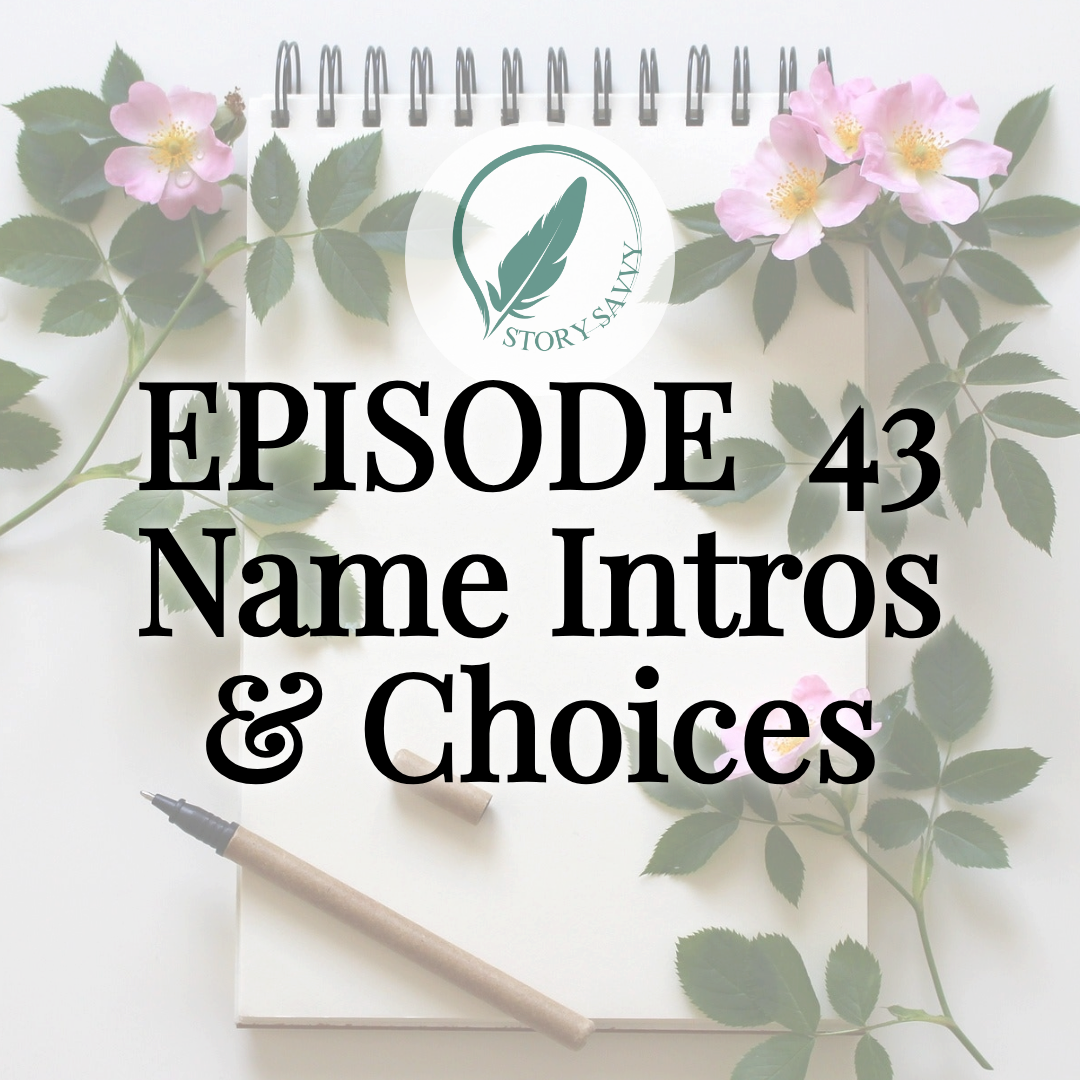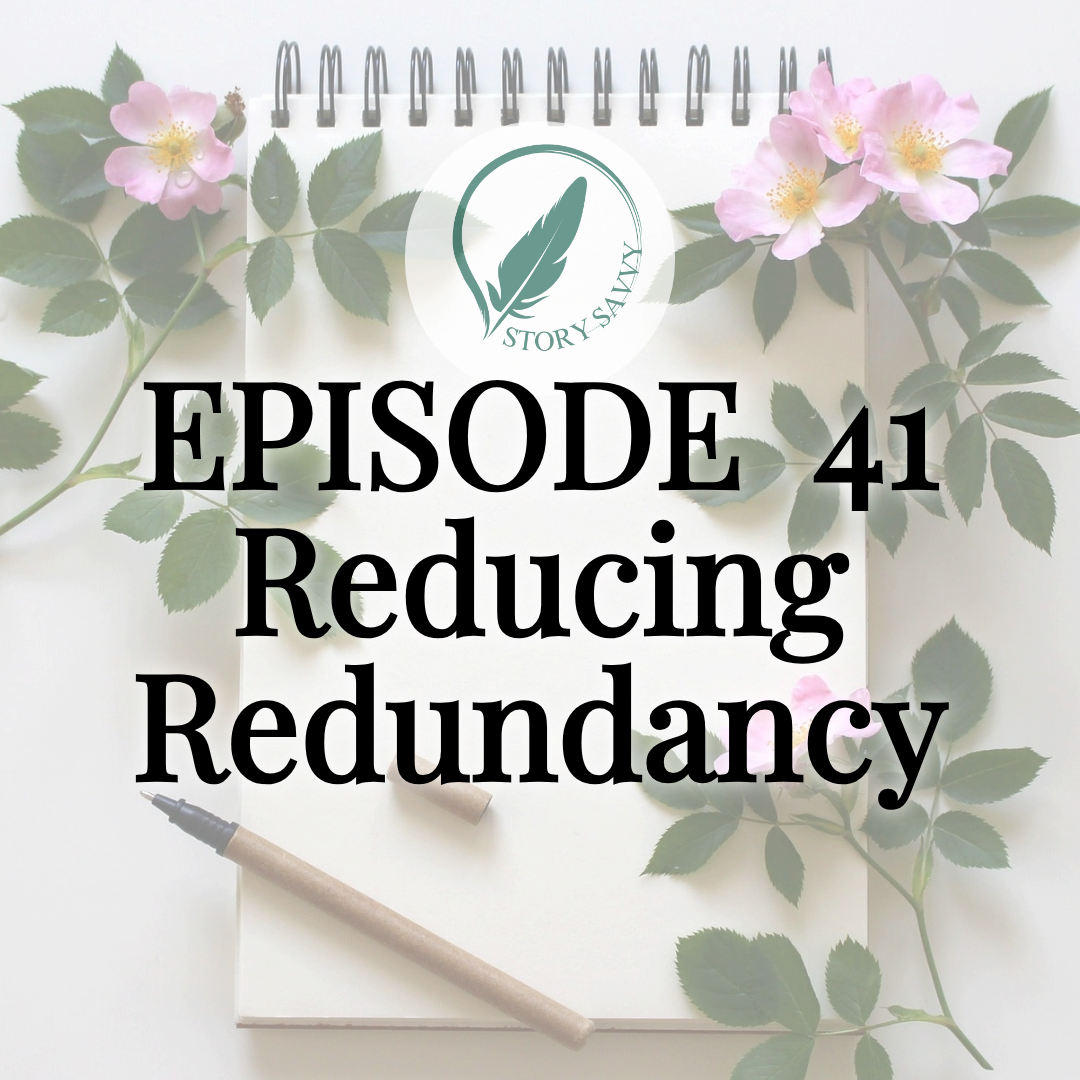Show Don’t Tell: Story Savvy Self-Editing Episode 42
Exposition & Info-Dump: After-episode thoughts, overview, and transcript…

The other episode I referenced in this one which I feel may be helpful to revisit or compare are:
Episode 36: Pacing — Big & Small Moments
Episode 37: Handling Jumps in Time, Place, & POV
Happy editing!
Episode 42 Overview:
Exposition & Info-Dump: Show vs Tell
"What exactly are exposition and info-dump? Why should authors avoid them both, and how can you still provide the same information to a reader without it feeling like either?"
Show versus tell goes far beyond basic writing advice—it shapes how readers experience your story and is narrative distance explained. This writing craft podcast from the Story Savvy Series offers insight on how to avoid info dumps and perspective on when telling delivers necessary clarity. You’ll discover story structure and editing techniques that keep prose purposeful and avoid over-description. With actionable developmental editing advice and storytelling improvement tips, this episode gives you the tools to polish your manuscript while maintaining emotional depth and narrative drive.
In this episode of the Story Savvy Self-Editing Series, developmental editor Rebecca Hartwell and aspiring fantasy author Agnes Wolfe unpack the fine line between showing and telling. Rebecca shares how to spot when description becomes over-showing, how to replace info dumps with natural “just-in-time” information, and how strategic telling can sharpen your story’s focus.
In this episode:
- Identifying the right ratio of showing to telling
- Spotting when description starts to slow the story down
- Why telling prevents reader immersion
- Cutting exposition that clutters your narrative
- Choosing when telling moves the story forward
- Integrating key details naturally through action and dialogue
Recommended Resources:
- Developmental Editing
- Agnes Wolfe: www.agneswolfeauthor.com
See you next week for episode 43: Name Intros & Choices
Episode 42 Transcript:
Exposition & Info-Dump: Show vs Tell
Rebecca Hartwell: Hello and welcome to the Hart Bound Editing Podcast. This is episode 42 of the weekly Story Savvy series, where we tackle the 52 biggest self-editing topics and tips to help you make your good story great as an aspiring author asks me, a developmental editor, all of the questions that you have wanted to. We've covered so much in this series so far, including last week's episode on reducing redundancy and repetition. Today, we are going to take a look at avoiding or fixing exposition and info dump. By the end of this episode, you will hopefully know how to spot the difference between poorly presented and well-presented information in fiction, and have another great tool in your pocket for healthily reducing word count and improving your pacing. Joining me, as always, to ask the questions is my good friend and co-host, Agnes Wolff. Hello.
Agnes Wolfe: Hi, I'm an aspiring fantasy author who hopes to release her first middle grade fantasy later next year, and also host and founder of Authors Alcove. I'm here today to tackle avoiding these classic literary problems. So, we have finally arrived. I feel like this topic has come up in so many different episodes, in so many different ways. The “show, don't tell” is definitely one of the most common things that you hear, the most common writing advice you'll hear anywhere. So, everyone has heard at least that phrase, not all of us understand it. So I was wondering, how do you want to introduce this particular topic today?
Rebecca: I agree that “show, don't tell” is probably the most common piece of writing advice out there. And I think that that advice is very often helpful, but not always. I think there is very much a place for showing and telling in fiction to deliver the best story possible. First of all, the reason that this gets said so often is that immersion is really important for good fiction, and showing aids immersion a lot. However, clear meaning is also important, and that's where telling is more useful. If you really need to have a reader understand what's happening, or what something means, telling is more clear than showing is. And then also, showing is more valuable when you want to deepen the experience of that immersion. You want to have the readers really—can't avoid repeating myself here—deep into the story and into the experience of your protagonists. However, there is a balance where you also want to get on with things and get to the next interesting thing, which telling can help you achieve more quickly and succinctly.
Agnes: I know that I was talking to a writer, actually not too long ago, and one of the things they said is that they hate when people say, “Show, don't tell.” And she was like, “What does that even mean?” So I think that it's important for us to establish right now—can you maybe explain what showing is versus what telling is a little more for anyone who may be less certain or inexperienced?
Rebecca: Absolutely. Telling is making statements about what's happening or what people are feeling in the narration, which is essentially anything outside of dialogue or internal thoughts. Specifically, telling, as in that show-don't-tell part, is telling in ways where the reader would not know what was happening or what was going on, or have any context for it if they weren't being told directly by the author. Showing is specifically using sensory input to impart the same information. So, imparting events or details through sights, sounds, smells, and most often through physical actions, so kinetic sensory information done by one of the avatars in the story. So, for example, and I'm just going to give one example in the hopes that that's helpful. If not, go Google the topic. There are so many great articles on the topic out there, so… For example, telling would be something like:
“Kate was extremely cold, and losing hope when she stumbled across what appeared to be an abandoned cabin. After making sure no one was inside, she broke a window and climbed in before settling in for the night and trying to stay warm.”
That is all me as the narrator, the storyteller, telling you what Kate did, as sort of facts, or points on a timeline of events kind of thing. Showing that exact same thing might look like:
“Kate couldn't feel her hands or feet, and squinted against the snow blowing in her eyes. As if her silent prayer for shelter had been heard, the looming outline of a cabin appeared among the trees, and Kate ran for it. She knocked hard on the door, only hearing silence in response, and found it locked when she yanked on it. Bracing herself, she broke a pane of glass in the window beside it with her elbow, careful of the broken shards as she climbed inside. She slid down the wall, shivering, and tucked her blue fingers under her arms before succumbing to exhaustion.”
So, just to take one tiny point from that to really hammer home, in telling, I told you that Kate was extremely cold. In showing, I describe her hands and feet being numb, and her fingers being blue, and her shivering. That's the difference between telling and showing. So, hopefully you can see that difference here, that line between the two, and really that difference between being told what Kate does and being shown what Kate experiences and chooses to do. I hope that makes sense.
Agnes: Yeah, it does. So, what exactly are the downsides of too much showing or too much telling? Especially too much showing, since that's what we're told that we're supposed to be doing all the time?
Rebecca: So, yes, I think people are more familiar with what too much telling looks like. It's easier for them to grasp because it gets talked about more. When you're doing too much telling, it keeps the reader distant from what's happening. It prevents them from getting really immersed in what's happening, and it can feel like a scene or a moment is unfinished, or not yet fleshed out. And it can also make the reader think too much about the writer themselves, rather than the story that that author wrote. On the other side of that, like you just mentioned, I don't think that people have nearly as much awareness about what too much showing looks like. What ends up happening if you take that advice of “show, don't tell” to too far of an extreme, is that you end up with a lot of information provided, as in, you're describing all of these kind of things, but the reader doesn't know what to do with that information. And there was one book that I edited years ago that is kind of like the example in my head of this, and it was high fantasy, and the author did great with immersion. Everything was shown. The problem with that was, I would read through a whole scene of descriptions and character interactions, and he was mentioning the tone of voice and the little nonverbal communication that was coming up, and the specific details of a map or something like that that was being shown that felt like it was going to be important. But because all of it was shown, and none of it was told, there was a significant lack of clear meaning to any of it. So, that's what I suggest people watch out for on the other end of that spectrum. You don't want to be hard at either end. But if you are going so far into the descriptions and showing that it's no longer clear why something is being shown, you need to dial that back or introduce more telling. Just a couple of other considerations on these downsides of too much showing or too much telling include, you don't want to over-describe things that aren't worthy of it. So, if something is just a throwaway one-scene mention, that should be described less and probably told more succinctly than if you are showing the reader very important details that are going to be vital in the payoff of the climax kind of thing. So, when you're looking at showing or telling, show the important things more, tell the unimportant things more. We pretty much covered that specifically in episode 36 if anyone wants to go back to that. Another consideration would be that showing can drag your pacing down into purple prose and shoe leather if you're not careful with it. a certain amount of showing is great, but if it starts spiraling off into you just exploring your world without direction, without it going somewhere purposeful, then take a look at that and see if the descriptions need to be there at all. If you need to bring up an entire topic at all, just to be able to show rather than using your telling to avoid that purple prose, that over-description, and just get on with it. And then the last point that I want to mention here with these downsides is if you're doing too much telling, It might not feel like fiction. And I know that's going to sound weird, but non-fiction is a lot more telling. than fiction is. So, if you're trying to write fiction, but you're writing it out like a historical account of exactly how a battle played out in a, “well, General So-and-So did this, and that caused the other army to do this, and blah blah blah…” it loses the magic. And in fiction, particularly in fantasy, which is my wheelhouse, you want to keep that magic going, and that's a big part of why “show, don't tell” is such common advice.
Agnes: I have a funny example, is… you actually were editing one of my early scenes—which, the whole scene got cut, by the way—but you had said, “Why are you describing all of this?” This guy was moving one animal to one thing, and whatever, and you had said something. And so, when I went to edit that particular chapter, I had someone else read, and I was like, “What problems do you see in this chapter?” And that was the very first thing they said, too, is like, “Why were you sharing all that?” And I'm like, “Well, I was showing. I wasn't telling!”
Rebecca: Right.
Agnes: And yet, it was definitely a problem for at least the only two readers that I had read that particular version of that chapter. And so that tells me, okay, sometimes we just need to tell, not show.
Rebecca: Yes, and I think that's a great point of, you shouldn't be showing for the sake of showing. You should be showing something that you would otherwise be telling to get the story told. I think that's a fantastic point.
Agnes: And just so that you know, whenever I ask anybody, I'm like, “Do you agree with Rebecca here?” I don't actually tell them that that's what you said. I ask them a question to see, and then they agree with you, and I'm like, “Dang it!”
Rebecca: That’s a smart way to do it, avoid biasing them, that's good advice for any kind of beta readers or feedback of any kind, yeah.
Agnes: Yeah, but I'll be like, “What do you think about this right here?” Because I'm like, should I edit it? Should I not? And then when they say the same thing, I'm like, “Aw, man! That's a… I guess I need to.” Okay, anyway, back on track. So, how can we know when to tell? I feel like we've already gone over this, so if you want to go on to the next question, that's fine, but—how can a writer tell when to use one or the other?
Rebecca: Sure. So, again, the value of showing as immersion and the value of telling is clear meaning. So, if folks really want to kind of dive into this more deeply, then I'm going to refer them back to episode 36, again, where we talked specifically about not backing off the big moments—and by backing off, I specifically mean shifting from showing to telling. Telling is more distant, so that's this back off from the immersion, or… I don't remember if it was in that episode or a different one… we were talking about narrative focal length, where you're sort of zooming out from the real time to more of an overview. Telling is that, showing is zooming back in. So, on the other side of ‘don't zoom out from your big moments, stay zoomed in,’ on the small moments, that don't matter as much, or you just want to kind of get over and get past, do zoom out, and that means shifting from more of that showing to more telling. And then, sort of, on the last point to answer this question briefly, you can tell when you should be telling or when you should be showing, to some extent, based on your genre lens that you're looking through. So some genres want more showing, some want more telling. Just off the top of my head, fantasy probably wants the most showing, because a big part of it is this immersion in this sort of alternate reality. It's kind of the same for sci-fi. But then, stories where it's just about getting through the plot, so, let's say a murder mystery, that's going to be—again, you don't want to go past the Goldilocks zone—but within the healthy spectrum, it's going to be more telling and slightly less showing. So, genre's important. Your goal with this story can be really important in deciding if you want to show or tell overall, or in a particular scene or chapter, or moment. If your goal is immersion, that should be more showing. But then if your goal is, let's say, you're writing fiction that kind of has a very strong message, like a nonfiction book would—like, you're trying to fictionalize a self-help book, maybe—then clarity of your message is going to be a big part of your goal with that story, and clarity of meaning comes through more telling, so you might have to shift that spectrum up a little bit as well. So, kind of the same thought for your theme, goal and theme are very interchangeable but worth mentioning anyway. The heart of your story can play into those, so if the heart of your story is about immersion, do more showing. If it's about clear meaning, do a little bit more telling, especially in whatever the primary scene in your story that delivers that heart of your story is. And then lastly, considering your audience, or your single audience member like we talked about at the very beginning of this series, can help you make that choice as well. If you are staring at a page, or a scene, or a paragraph, and trying to decide if you want to dial it up into more showing or dial it down into more succinct telling, try to put yourself either in the shoes of your single audience member, or in the seat across the table from them. And imagine if you were telling this story to that person in the way that would connect with them the most, would showing or telling be the better choice for that individual person, and how does that feel in you trying to connect with that individual or that demographic of your audience?
Agnes: So, going off of what you just talked about, you definitely said that genre plays a part. Me being middle grade, you being in adult, how does age of our audience play a part in how much show versus telling we should do?
Rebecca: I think that can be a little bit tricky. I think that middle grade and younger, you have to do a lot of telling. Because as people mature into adults, they have a lot more life experience, which is a big part of it, but through whatever factors are in that, they become better at extrapolating information from clues and hints. So, if you read a… I think they're called board books for toddlers, that's not going to do a lot of showing to get the story across. It's going to say this character did this, and this happened. It's telling, because that's needed. for that audience to understand it clearly. As you age up, I would say when you get into and through the young adult ages, that’s where I tend to see the most scaling up into more showing. So, younger young adult— Did I say that right? Yes, so younger young adult—I don't know why that phrase is breaking my brain. Anyway, that's going to be a fair bit more telling, because you're still communicating with people who maybe need a little bit more direct clarity about what's happening. But then by the time you get into the older young adult age ranges into maybe new adult, they very much want more of the immersion and more of the showing, and more of the being treated like an adult by the author, so you're going to see a pretty significant shift in that spectrum from telling into a lot more showing.
Agnes: I also feel like point of view has a lot to do with it, whether it be first person, third person, or even the character themselves. How do you [think] that plays a part in show versus tell?
Rebecca: So, first-person versus third person absolutely makes a difference, and the difference is primarily in third-person, it can feel more natural to do more telling than it does in first person in certain situations. Hold on, I'm… this is a very complicated topic, so… In first person, it can be tempting to do a lot of telling from an internal place. So, in first-person narration POV, it can get tricky to avoid stating how the character feels, because you're in their head. It would be an “I” statement of, I really don't like this person, or I feel really anxious today, but that's still telling, and you still want to stay in that healthier, more-on-the-show-side-of-things range. So, you still need to reach for experiential descriptions rather than statements. So that might be, My stomach is in knots today, or my hands won't stop shaking, or I see a person across the room, and I think something like, God, not them again. So, you still need to keep the internal things showing, which is the tricky part. On third-person narration, it tends to be easier to slip into telling with the external stuff. So, stating that so-and-so did this thing, because you're not in their experience as much as you would be with first person. So, that's kind of the difference that I can see there. So, with specific character personalities affecting “show, don’t tell,” which I think was the second part of your question there, that is even more complicated and down to the individuals. I mean that in the sense of it's down to the individual author and the individual character. I can absolutely conceive of one book having a character, let's say that both books are past tense, third person, deep POV. So, same sort of narrative-style choices. But, one of these protagonists is a very observant, or just sort of outgoing and passionate person. It's reasonable that they would have a much more showing-heavy point of view and presence in the story and way of telling their own story, then would, let's say, a very repressed, buttoned-down, grumpy, narrow-focus protagonist who might do, in their own head, in their own life, in their own world, in their own story, a lot more just cut and dry statements about things. That's totally reasonable. However, I don't suggest taking that to any extremes, especially on the telling side. If you have a protagonist… I'm trying to think of the most extreme example of this I could see working… it would have to be a first person narrative with a protagonist who just doesn't exist in their world in a particularly embedded way. But even then, if the story is still just all of them making statements, that's not going to be fun to read. So, you still need to try to balance in enough showing that it's within that healthy range, which is still going to be on the sort of showing half of that show-don't-tell spectrum.
Agnes: So, where do the terms exposition or info dump come into this topic? Because I know when I first started writing, and I started listening to a bunch of podcasts, I heard info dump for the first time. And so, like, I know I cannot have been unusual to have just heard that when I first started my writing journey.
Rebecca: Absolutely. Info dump and Exposition are essentially interchangeable terms to start with, so if you know the definition of one, you essentially know the definition of the other. And what info dump and exposition are tends to be when you are doing too much telling, specifically about things that aren't currently happening. So, you can just be telling the scene that's playing out, like I did with my fully fleshed-out examples earlier of “tell, don’t show”—or sorry, “show, don't tell,” the two versus each other. What info dump and exposition are is when that telling shifts away from what's actually happening right now. So that could be backstory, that could be one character going off on a tangent about let's say the world-building about medicine and injury in this world to the other, and it just becomes them going off on this rant about this information that you need the reader to know, but it doesn't really make sense, and it doesn't keep moving the scene that is actively happening forward. That's what info dump and exposition are. Specifically exposition, there's a little bit of a nuance there, where exposition leans a bit more in the direction of, you have a protagonist standing there going, “Hello, my sister, who I haven't seen in 6 years,” kind of thing, where it doesn't feel natural to actually get said in that scene, but you're trying to present this information to the reader in a way that isn't telling in the narration, but it's still expositional when it comes through dialogue, so. I hope that sets up those, um, definitions a little bit. Beyond that, I would say that exposition and info dump are most often the terms you're going to see used by feedback readers when you are landing too far on that too-much-telling side. So, keeping an eye out for those, just as red flags, to tell you that you're dealing with this bigger issue, can be helpful.
Agnes: So can we still provide necessary exposition which the reader needs to understand stuff in the story without it feeling like an info dump?
Rebecca: Absolutely. And if you have information that needs to be provided to the reader, one of the easiest ways to do that is just to make it more relevant. So, let's go back to that sentence that I used of, “Hello, my sister, who I haven't seen in 6 years.” That's exposition, and that's not good exposition. So instead, you can present that information, let's say, again, you're in first person, deep POV—that could look shown, which is an info dump, more like I saw a face across the room and realized it was my sister, and I had to decide between running away, because I don't want to see her again after 6 years, or dealing with the uncomfortable conversation I know we're about to have. That's more of a showing of the same information without it being exposition or info dump. So, one of the most important tools in anyone's arsenal, as far as I'm concerned, as a writer, which I've definitely mentioned before, is the idea of presenting information just in time versus just in case. So, if you are telling the reader, or showing the reader—trying not to get my vocabulary confusing here. If you're presenting information to the reader, in the moment that things would become confusing or frustrating if they didn't have that information, it's not going to feel like info dump. So if you need to tell your reader all about the medicine tradition of your fantasy world and how broken bones are dealt with, have your protagonist break a bone, and go to a hospital, and get treated. That's how you make that information relevant just in time for it to be needed, versus meeting a healer at a pub and having them just info dump their job or their perspective on this topic to the protagonist in a situation where this information isn't relevant right now. It's being presented just in case the reader needs it later, and to be clear—and I don't think I've made this point other times I've mentioned this—it still counts as just in case if the reader does need it later. The difference is delayed payoff for that information getting explained, or immediate gratification from it.
That is the biggest tool here, but beyond that, I will just mention that moving where something comes up can make a big difference in whether or not it feels like exposition or info dump. And part of that is finding somewhere where it is more immediately relevant, or more important, to the protagonist and how things are playing forward, and just picking up that paragraph, putting it in this better context for it. And then, you know, there's just sort of this idea of sprinkling versus dumping. So, info dump is a term that I most often see when it's a full paragraph or a few paragraphs, or a full page, or a few pages that, again, gets away from, “these are the things that are actually happening that I can show playing out through sensory description” and wanders off into, “but this worldbuilding, and you need to know this about the government, and the military structure, and whatever else.” If you can, and if you want to try to fix that, try breaking that dump up into much smaller sections and spread them out. Sprinkle them throughout the book. Again, try to find spots where each individual detail is immediately relevant. So, let's say you have half a page that is describing the military ranks in your sci-fi world. Okay, that's info dump, that's not great. Let's take the one detail of, this is the title for the highest commanding officers in the field—and we're going to take that, and we're going to put that detail alone the first time the first character with that rank shows up and starts giving orders. Great. Alright, now we're going to take the sentence that says how the starships are powered, and we're going to take that, and we're going to go put it in the spot where they first start a starship engine. And by sprinkling it out, that completely removes the feeling of it being info dump, especially since when it's spread out, there's a higher chance that you could rewrite the sentence so that it is showing versus telling.
Agnes: So, wrapping up here, I just have one last question. When we do get feedback from alpha or beta readers—and I know you kind of touched on this already—are there things they might say or notice about our work that will indicate that we are leaning way too much for show versus telling, yet might not use those words exactly.
Rebecca: Sure. If you're leaning too much into showing, over-telling, what you might get is just a lot of confusion. When I've encountered the rare books where they did too much showing and not enough telling, the result is just that I'm reading through, and things are happening, and I'm getting lots of century description, but I'm really confused about why and where things are going, and why this character made that choice, that kind of stuff. So, if you're getting a lot of confusion, that's probably an indication to at least check if too much showing and not enough telling is a reason. It's more common that readers will see and give you feedback that you're doing too much telling versus showing. And from my experience, readers and everybody knows that advice. So, it is very likely that if a feedback reader of any skill level is picking up on that, they will use that exact wording, so that's not too much of a concern. But, on the off chance that someone does want to avoid that wording, or hasn't heard it, or whatever, definitely watch out for the bits that I mentioned earlier, but also for people saying that it feels like the POV is too distant. Or, saying that your author voice is coming through too clearly, or that it feels like you're holding the reader at arm's length. Those are all wordings that I've seen that basically say, “I'm not being immersed enough.” And that right there is telling you that you're doing too much telling and not enough showing. So, I think that's everything that I can think of right now.
Agnes: Well, thank you so much for sharing all that. I really do appreciate it.
Rebecca: Absolutely. Next week, we will be doing the first of two episodes specifically on self-editing around names, and tasks on that topic that I think every writer should do. For now, I will thank everyone who follows along with this series. If you know any authors who are nearing the end of their first draft, or struggling with their revisions or rewriting their novel, please send them this podcast. The more authors we can help understand and finish the process of self-editing, the happier I will be. Thank you all, and thank you, Agnes.
Agnes: Thank you so much.
Rebecca: Thank you so much for listening to the Hart Bound Editing Podcast. I look forward to bringing you more content to help you make your good story great so it can change lives and change your world. Follow along to hear more or visit my website, linked in the description, to learn how I can help you and your story to flourish.
See you next time!
